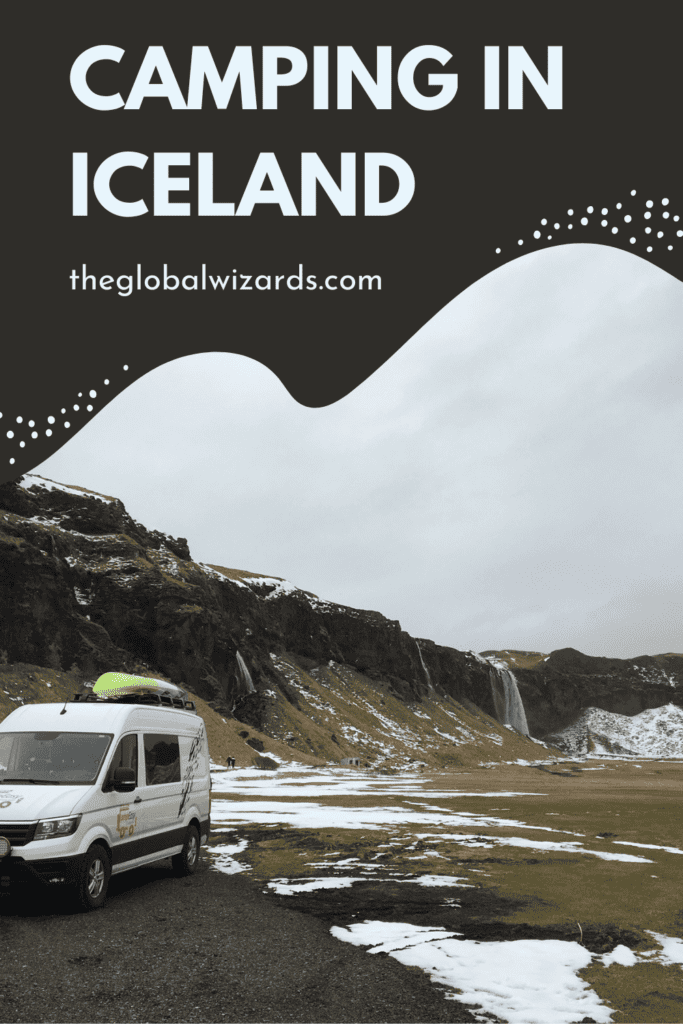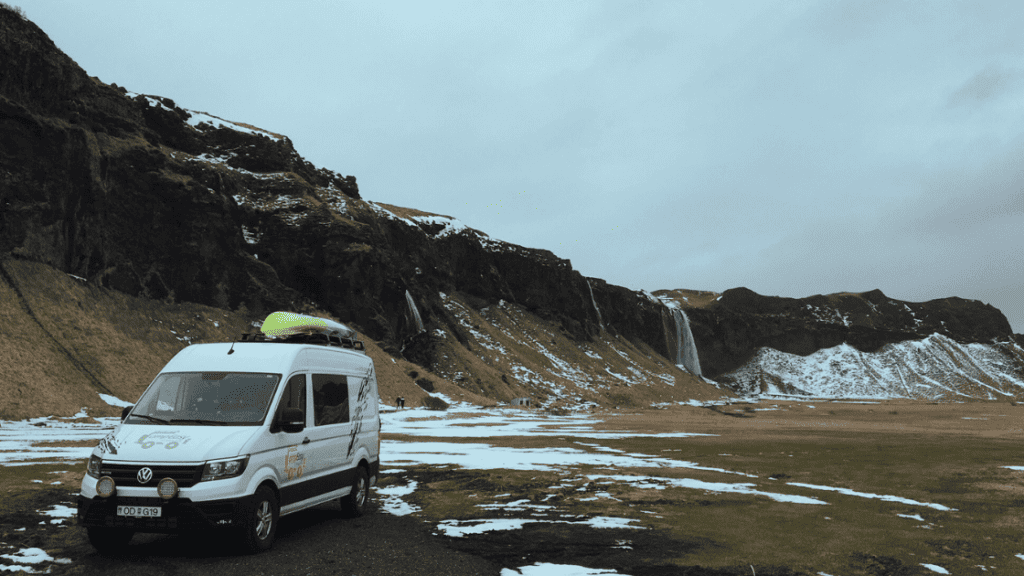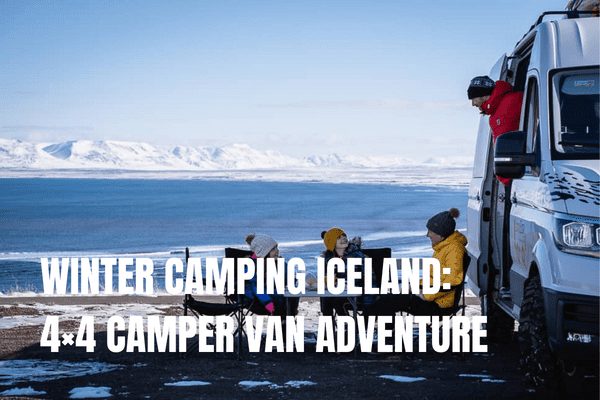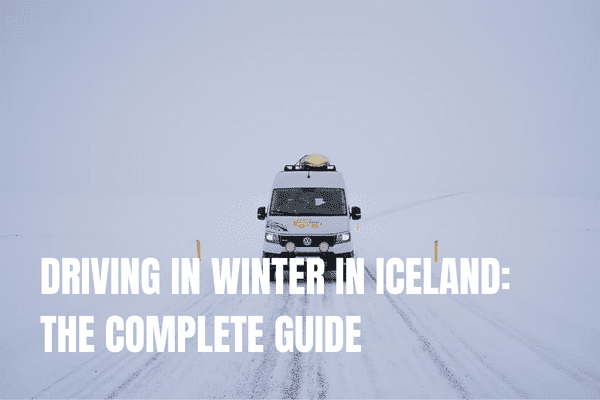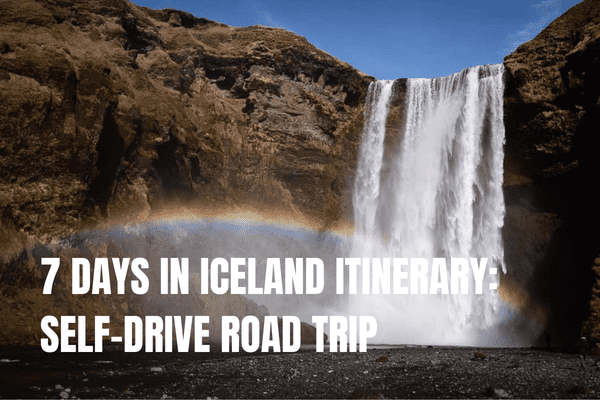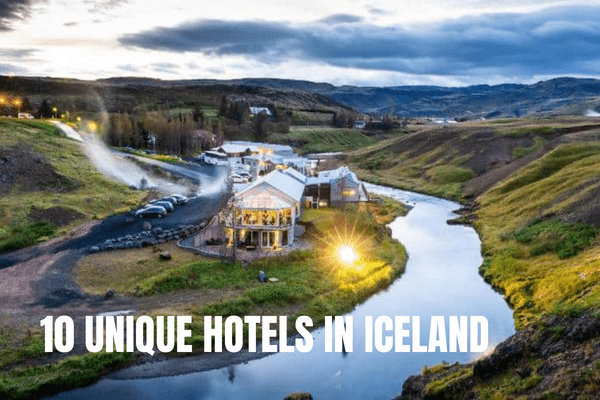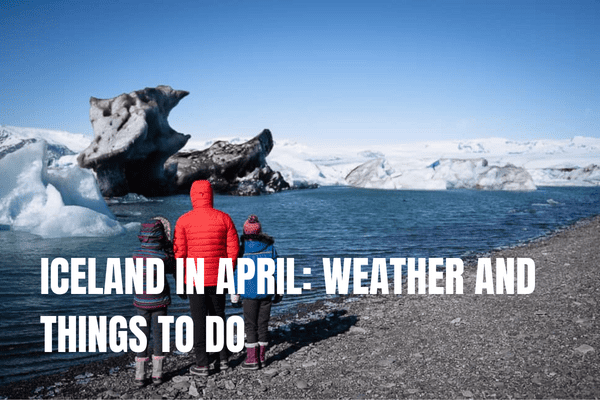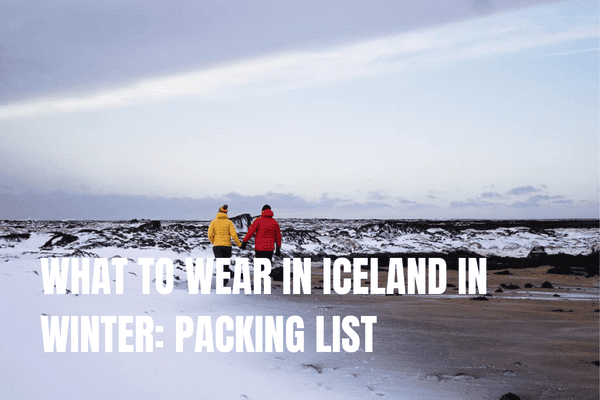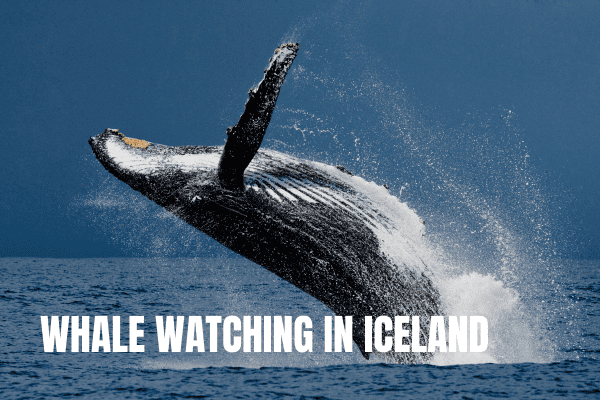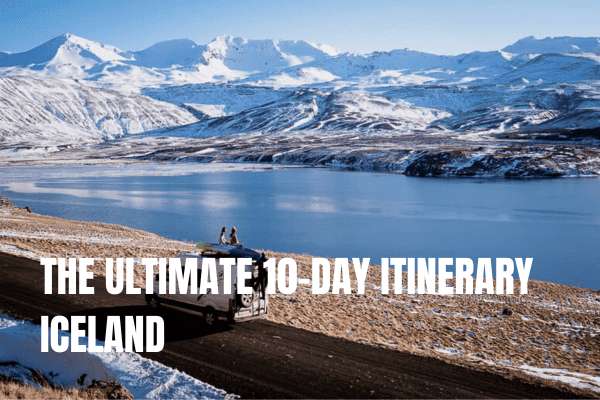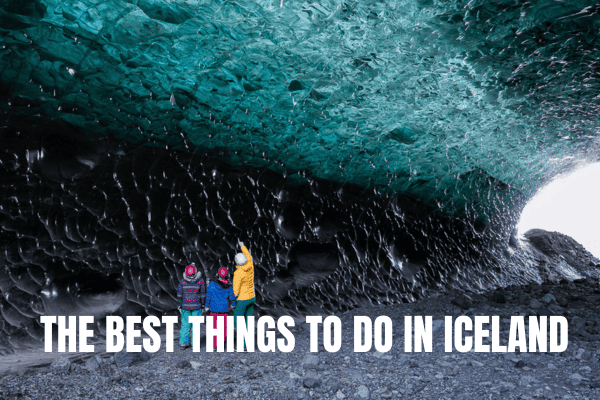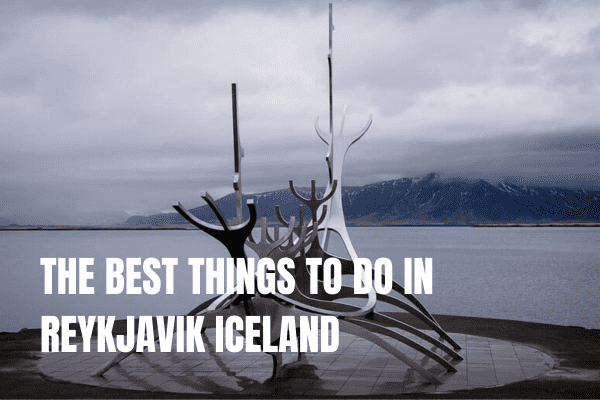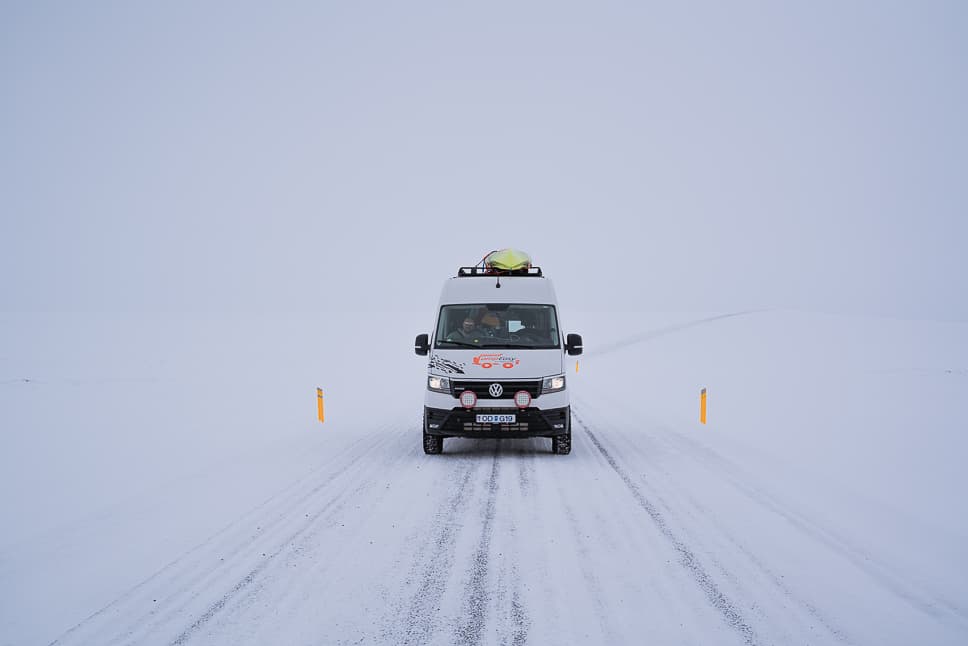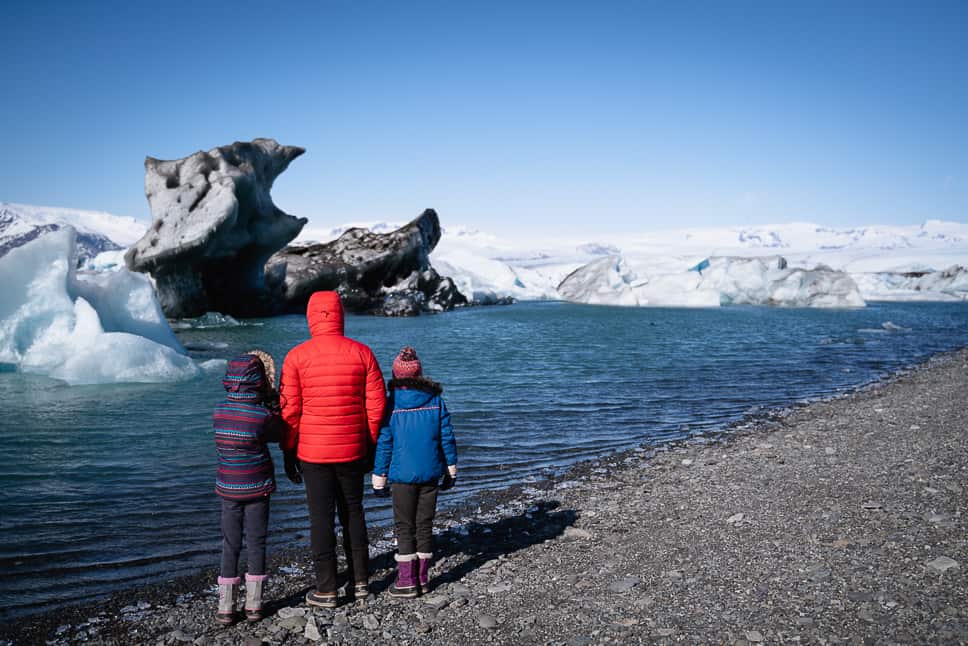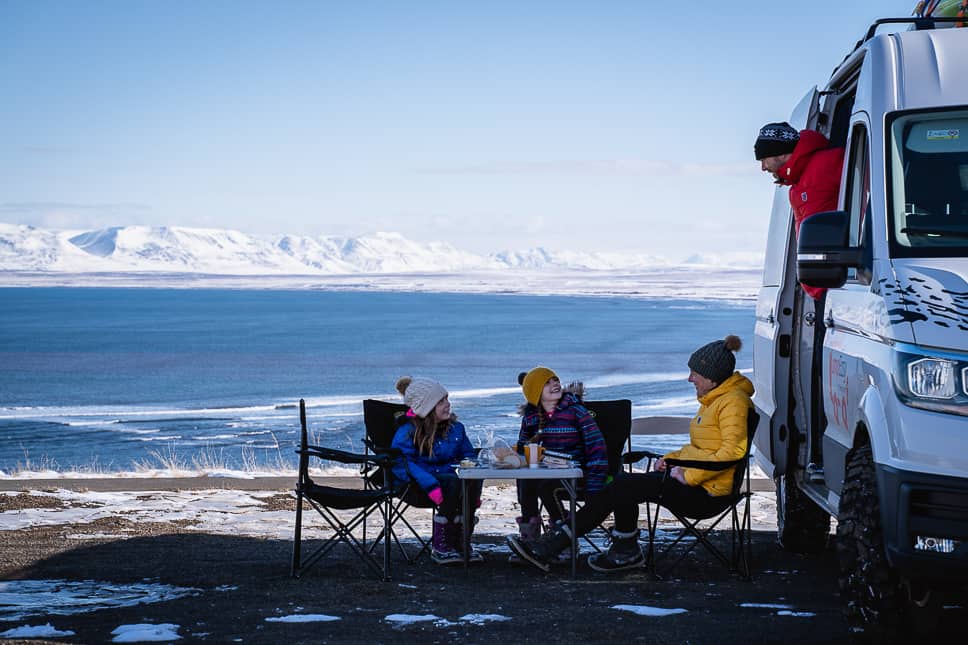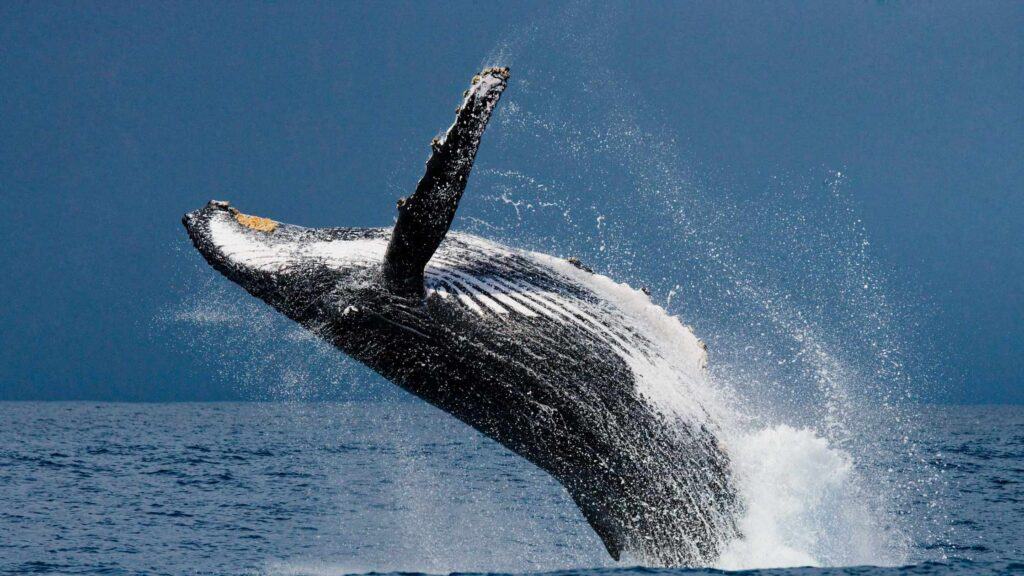The ultimate guide to camping in Iceland: Everything you need to know
Camping in Iceland is a popular activity for tourists and locals alike. Iceland’s breathtaking landscapes, natural wonders, and unique culture make it a must-visit destination for outdoor enthusiasts.
With a wide variety of campsites available throughout the country, camping in Iceland is a great way to experience the beauty of the land of fire and ice. It is possible to go camping in Iceland in winter (be prepared!) and in the summertime.
When we went to Iceland we rented a camper and stayed on campsites. We visited Iceland during the winter but it was no problem to find campsites that were open. Make sure you have the right clothing and material. Be sure to check out our article about what to wear in the winter in Iceland.
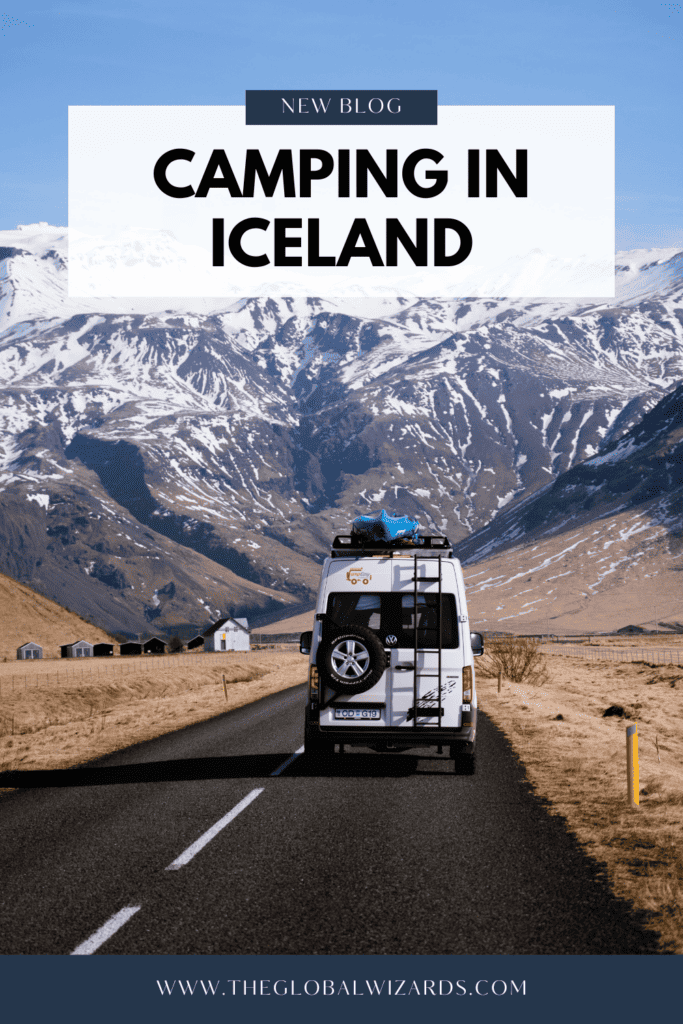
What is the best time to go camping in Iceland?
Iceland is a beautiful country with a unique landscape that attracts visitors all year round. However, when it comes to camping in Iceland, the best time to visit depends on your preferences and tolerance to cold weather.
Summer camping
The summer months from June to August are the most popular time for camping in Iceland. During this time, the weather is mild, and the days are long with almost 24 hours of daylight.
But campsites are also more crowded during the summer months, so it’s best to book your spot in advance. Keep in mind that prices for campsites and other accommodations tend to be higher during this time.
Winter camping
You can also camp during the winter, but make sure you are well-equipped. The winter months from November to March are characterized by long nights, cold temperatures, and unpredictable weather. However, if you’re up for the challenge, you’ll be rewarded with stunning views of the Northern Lights and a unique winter wonderland experience.
If you’re planning to go winter camping in Iceland, make sure you’re well-prepared with the appropriate gear, including a sturdy tent, a warm sleeping bag, and insulated clothing. It’s also important to check the weather forecast regularly and be aware of potential hazards, such as avalanches and strong winds.
On our site, we have some interesting articles about Iceland in winter. In our article about what to wear in Iceland from October until April, you will find a lot of tips and gear you can use on your winter camping trip in Iceland.
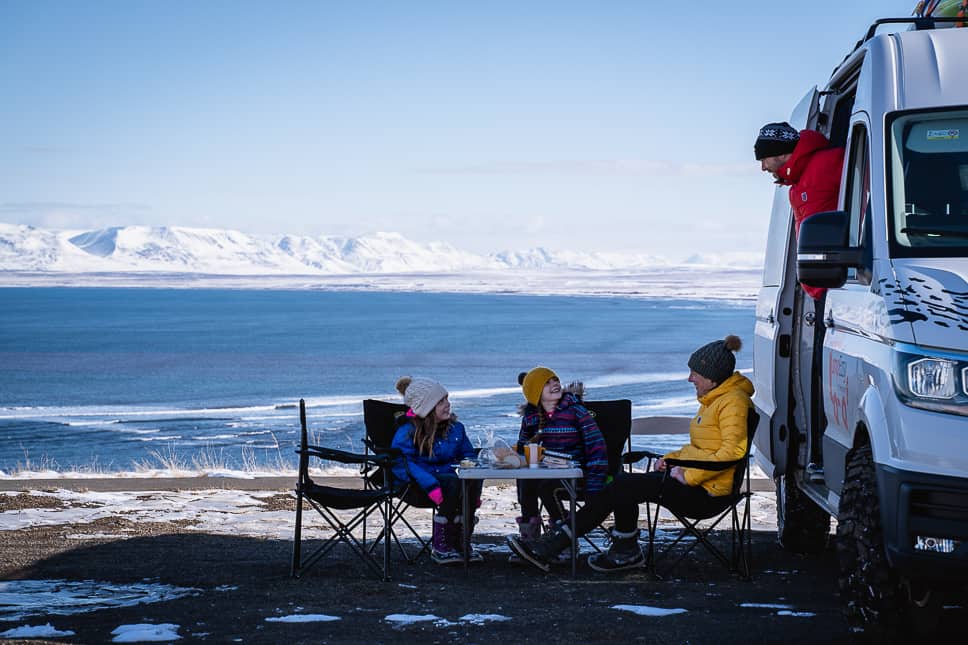
Shoulder seasons
The shoulder seasons of April to May and September to October can also be a good time to go camping in Iceland. During these months, the crowds are thinner, and the prices are lower. However, the weather can be more unpredictable, with occasional snow and rain.
It’s important to note that some campsites may be closed during the shoulder seasons, so it’s best to check ahead of time.
In summary, the best time to go camping in Iceland depends on your preferences and tolerance to cold weather. If you’re looking for mild temperatures and long days, summer is the ideal time to visit. If you’re up for a challenge and want to experience the Northern Lights, winter camping may be for you. The shoulder seasons can also be a good option, with fewer crowds and lower prices.
Camping accomodations in Iceland
Iceland is a popular destination for camping enthusiasts. There are several options for camping accommodations in Iceland, including campsites, campgrounds, wild camping, and campervans.
Campsites
Campsites are the most popular camping accommodations in Iceland. They are usually located in scenic areas, close to popular attractions and hiking trails. Most campsites offer a full range of services, including showers, bathrooms, electricity, and nearby restaurants or shops. Some campsites also offer additional amenities, such as hot tubs, saunas, and swimming pools.
Campsites in Iceland charge between 1.500 ISK and 2.500 ISK (between appr. 12 and 20 USD) per person per night. Kids under 12, sometimes under 15, usually camp free of charge. Additional services like electricity, shower, or the use of the washing machine, are not included in the fee. It is recommended to book campsites in advance, especially during peak season (June-August).
Campgrounds
Campgrounds are similar to campsites, but they are usually larger and offer more amenities. They are often located near towns or villages and offer easy access to shops, restaurants, and other services. Some campgrounds also offer cabins or cottages for rent, which can be a good option for those who prefer a more comfortable camping experience.
Campgrounds in Iceland charge between 1.500 ISK and 3.500 ISK (between appr. 12 and 28 USD) per person per night. Additional services like electricity, shower, or the use of the washing machine, are usually included in the fee.
Wild camping
Wild camping is allowed in Iceland, but it is important to follow certain rules and regulations. According to Icelandic law, you are allowed to camp on uncultivated land for one night, as long as you respect the environment and leave no trace behind. However, it is not allowed to camp in national parks, nature reserves, or other protected areas.
Wild camping is a great option for those who want to get off the beaten path and explore the wilderness of Iceland. However, it requires a certain level of experience and preparation, as you will need to bring your own equipment and supplies.
Campervans
Campervans are becoming increasingly popular in Iceland, as they offer a convenient and flexible way to explore the country. Campervans are essentially small motorhomes that are equipped with a bed, a kitchenette, and other basic amenities. They are easy to drive and can be parked almost anywhere.
Campervan rentals in Iceland start at around 10.000 ISK (around 80 USD) per day, depending on the size and type of vehicle. It is recommended to book in advance, especially during peak season.
We traveled around with a Campeasy campervan and were very satisfied with it. More information about our 4×4 adventure in winter with a Campeasy campervan can be found in this article.
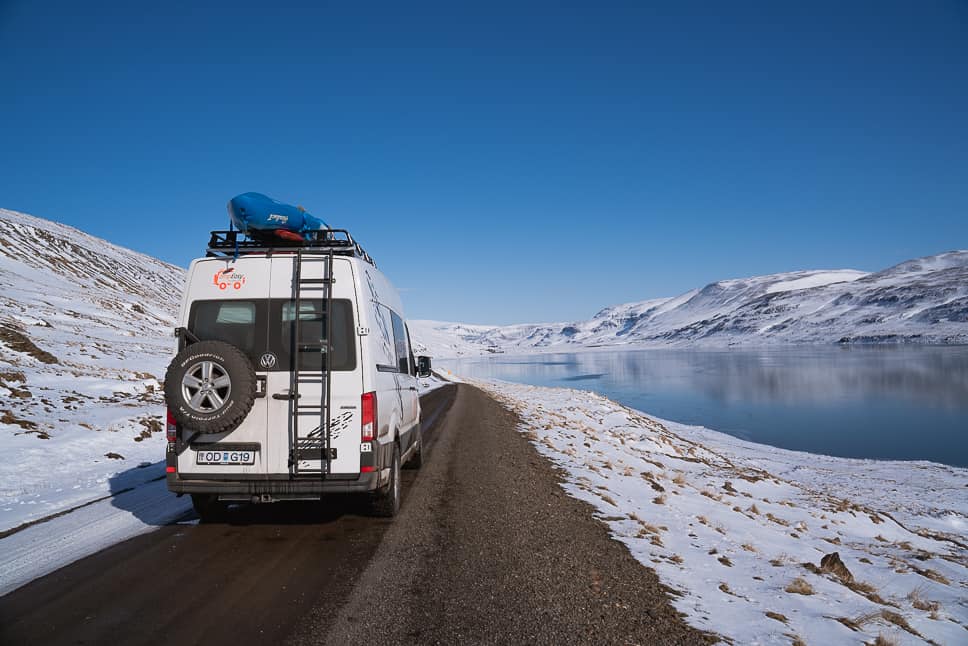
Camping equipment and amenities
When camping in Iceland, it is important to have the right equipment and amenities to ensure a comfortable stay. Here are some key things to keep in mind:
Camping gear
For those who plan to camp in a tent, it is important to bring warm sleeping bags, mattresses, and a sturdy tent. Those who travel with campervans and motorhomes need less specific equipment as they are basically traveling in a small flat. Renting camping equipment in Iceland is also a good option for those who want to travel lightly.
Tents, sleeping bags, crampons, clothes, cooking sets, and many more can be rented in Reykjavík for a small fee per day and so save you a lot of space in your luggage! On Iceland Camping Equipment you can almost rent everything.
Download our packing list for Iceland winter (October – April) if you’re looking to buy your own gear.
Electricity and showers
Most campsites in Iceland come with standard amenities like electrical outlets, showers, and cooking facilities. It is important to note that some campsites require you to purchase a camping card, which gives you access to these amenities.
The Iceland Camping Card is a good option for those who plan to camp in Iceland for an extended period of time. It offers access to over 40 campsites across the country and can save you a lot of money in the long run. On their website, you can find a list of all camping sites in Iceland that are part of the program.
Restrooms
Restrooms are available at most campsites in Iceland. They are usually clean and well-maintained. It is important to note that some campsites may not have flushing toilets but instead use composting toilets. It is also important to follow proper hygiene practices when using restrooms to ensure a clean and safe environment for all campers.
Swimming pools
One unique feature of camping in Iceland is the availability of natural hot springs and swimming pools. Many campsites in Iceland have their own swimming pools, which are heated by natural hot springs. It is important to follow proper hygiene practices when using these pools to ensure a clean and safe environment for all campers.
Where to camp in Iceland
If you’re planning an Iceland camping trip, you’ll be pleased to know that there are plenty of options to choose from. Whether you prefer designated campgrounds or wild camping in Iceland, there are many beautiful places to pitch your tent or park your camper van. Here are some of the best places to camp in Iceland, divided into regions:
South Iceland
South Iceland is one of the most popular regions to visit in Iceland and for good reason. It’s home to the Golden Circle, which includes some of Iceland’s most famous attractions, such as Geysir, Gullfoss, and Thingvellir National Park. There are also many other things to see and do in the area, including hiking, exploring waterfalls, and soaking in hot springs.
Some of the best places to camp in South Iceland include Skogar campsite, which is located near the famous Skogafoss waterfall, and various campsites on farmland. If you’re interested in wild camping in South Iceland, make sure to check with landowners to get permission first.
One of our favorite campsites is in Grindavik. Grindavik is a charming fishing town located on the southwestern coast of Iceland. You can discover the Reykjanes Geopark. In August 2022, the Fagradalsfjall volcano on the Reykjanes Peninsula erupted, following weeks of intense seismic activity. Check the website of the camping of Grindavik for prices and more information.
Westfjords
The Westfjords is a remote and rugged region known for its dramatic landscapes and unique wildlife. It’s a great place to go if you’re looking for a more off-the-beaten-path experience. There are many beautiful campsites in the area, including some that are located right on the coast.
One of the best things about camping in the Westfjords is the opportunity to see puffins up close. There are several places in the region where you can see these adorable birds, including the Latrabjarg cliffs.
Highlands
The Highlands is a vast and uninhabited region that’s only accessible during the summer months. It’s a great place to go if you’re looking for a true wilderness experience. There are several designated campgrounds in the area, as well as opportunities for wild camping.
You can find campsites in Kerlingarfjöll, Landmannalaugar, and Askja. But you must have a 4×4 to reach the highlands. The best thing you can do is rent a 4×4 roof tent.
Ring Road
The Ring Road is a popular route that circles the entire country of Iceland. It’s a great way to see many of the country’s most famous attractions, including waterfalls, glaciers, and volcanoes. There are many designated campgrounds along the route, as well as opportunities for wild camping.
If you’re planning on camping along the Ring Road, make sure to bring a good map of Iceland and plan your route in advance. It’s also a good idea to book your campsites in advance during the high season, as they can fill up quickly.
Overall, Iceland is a great place to go camping, whether you prefer designated campgrounds or wild camping. With so many beautiful places to choose from, you’re sure to have an unforgettable experience.
Tips for camping in Iceland
Here are some tips to help you make the most of your camping adventure in Iceland.
Weather
Iceland’s weather can be unpredictable, with strong winds and freezing temperatures, even in the summer months. It is, therefore, essential to check the weather forecast regularly and pack accordingly. Be sure to bring warm clothing, including thermal layers, a waterproof jacket, and sturdy hiking boots.
Check the weather in Iceland on vedur.is
Road conditions
Iceland’s road conditions can also be challenging, especially in the winter months. It is, therefore, essential to check the road conditions before embarking on your journey. The Icelandic Road and Coastal Administration provides up-to-date information on road conditions on its website. It is also essential to have a 4×4 vehicle if you plan on driving off-road.
If you’re going in winter, you can read more about winter driving in Iceland on our website.
Flexibility
Flexibility is crucial when camping in Iceland, as weather conditions can change rapidly, and road closures are common. It is, therefore, essential to have a flexible itinerary and be prepared to change your plans at short notice.
New law
In 2021, a new law was introduced in Iceland that requires all campers to stay at designated campsites. This law aims to protect Iceland’s fragile environment and ensure that campers have access to proper facilities. It is, therefore, essential to plan your trip accordingly and book campsites in advance. Check this article for more information about where it’s allowed to camp.
Advantages of camping in Iceland
Cheap and sustainable
Camping in Iceland is a cheap and sustainable way to travel. It is an excellent option for travelers on a budget considering the relatively high prices in Iceland. Camping is completely sustainable, so you can fall asleep in nature knowing that your trip has a minimal impact on it. It also allows you more independence than a hotel stay.
Freedom to explore
Camping in Iceland provides the freedom to explore the country at your own pace. You can choose where to camp, how long to stay, and what to do. You can wake up to the sound of birds singing, watch the sunset, and stargaze at night. You can also enjoy the midnight sun during the summer months, which is a unique experience. During winter you might see the magical Northern Light.
Connect with nature
Camping in Iceland allows you to connect with nature in a way that is not possible with other types of accommodation. You can experience the raw beauty of Iceland’s landscapes, including glaciers, waterfalls, and geysers. You can also see wildlife, such as puffins, reindeer, and arctic foxes, in their natural habitat.
Unique experience
Camping in Iceland offers a unique experience that is different from other types of travel. You can stay in remote locations, far away from the hustle and bustle of cities. You can also experience the Icelandic culture and way of life by interacting with locals and learning about their customs and traditions.
Frequently Asked Questions
How expensive are campsites in Iceland?
There are over 170 campsites in Iceland, and the cost varies depending on the facilities. On average, you can expect to pay between 10 and 20 EUR per person per night, with children usually staying free of charge. Keep in mind that some campsites may charge extra for electricity and showers.
Is wild camping allowed in Iceland?
Wild camping is not allowed in Iceland, except in designated areas. This is to protect the fragile ecosystem and prevent damage to the environment. However, there are plenty of campsites throughout the country, so finding a place to stay shouldn’t be a problem.
What is the best time of year to go camping in Iceland?
The best time to go camping in Iceland is during the summer months (June-August), when the weather is milder and the days are longer. However, if you’re looking for a more unique experience, you can also go winter camping in Iceland. Just be prepared for the cold and dark nights.
Do Icelanders camp?
Yes, Icelanders love to camp! Camping is a popular pastime in Iceland, and you’ll find plenty of locals enjoying the great outdoors during the summer months.
Can you rent a campervan in Iceland?
Yes, you can rent a campervan in Iceland. There are several companies that offer campervan rentals, including CampEasy. Renting a campervan is a great way to explore Iceland and have the freedom to go wherever you want.
What are some things to do in Iceland while camping?
There are plenty of things to do in Iceland while camping. You can explore the country’s many national parks, go hiking, visit hot springs, go whale watching, and much more. Check out our 7-day itinerary for Iceland for summer and winter. We also wrote an article about the best things to do in Iceland.
Are there any festivals in Iceland during the summer?
Yes, there are several festivals in Iceland during the summer months, including the Reykjavík Arts Festival and the Secret Solstice music festival. These festivals are a great way to experience Icelandic culture and meet locals.
Our favorite camping sites in Iceland
Skógar Campsite
The campsite is located next to the famous Skogarfoss waterfall, one of the most popular tourist attractions in Iceland, and next to Highway 1.
If you’re planning on camping in Iceland, you’ll be pleased to know that the area is well-equipped and popular among travelers. Typically, there’s plenty of space for campers. However, if you’re seeking indoor accommodation in the region, it’s best to book in advance.
You can find the Skógar campsite here.
Egilsstaðir Campsite
They themselves say on their website that they are the happiest campsite in Iceland. That might be true as they have all facilities, easy to book and pay online, and are located in the heart of Egilsstaðir town.
The Egilsstaðir visitor center is also located on the campground.
Not to be missed if you drive in the east of Iceland. Best to book in advance in high summer. The camping site is also open during winter in Iceland.
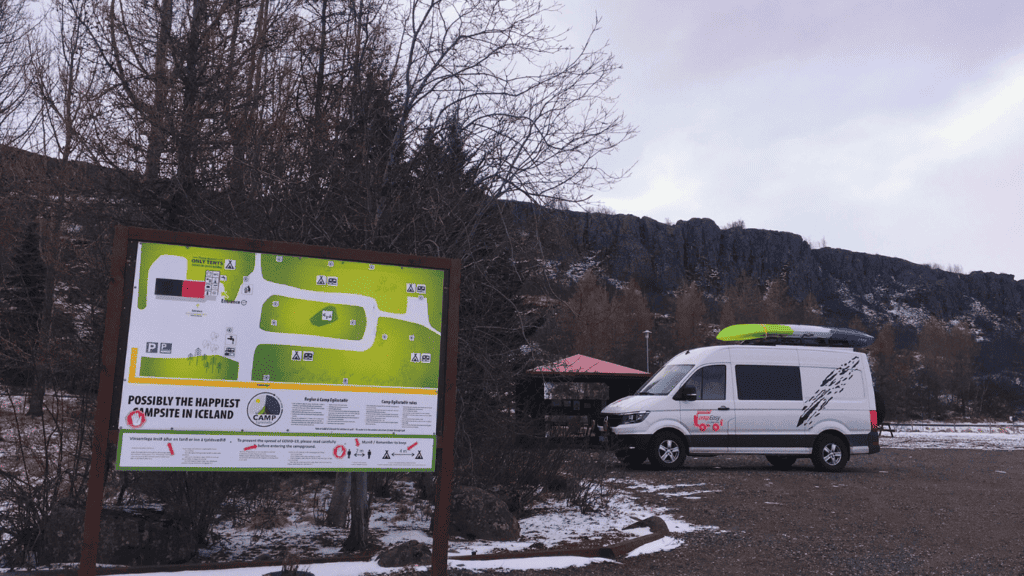
Ásbyrgi Campsite
The campground is located next to the Ásbyrgi Visitor Centre in the north of Iceland. It is the perfect place to discover the Asbyrgi National Park. You can stay in tents, campers, and mobile homes. In the service house, there are 4 showers for men and 4 for women.
More info about the campsite can be found here.
Kerlingafjöll Campground
The camping site at Mountain Kerlingafjoll is located in the valley of Asgard. The surroundings are spectacular here. They even have a natural hot spring to relax. You can only visit the campsite during summer as the highland roads are closed during winter.
More info about this amazing campground can be found here.
Siglufjörður Campsite
If you’re looking for a campsite in Siglufjörður, you’ll be happy to know that it’s situated in the heart of the town, right next to the pier and the square. All the essential services, museums, and activities are just a 5-10 minute walk away.
This location is perfect for bird watching and playing golf, as both activities are just a short distance away. More info about this campsite in Iceland can be found here.
The campsite is closed during winter.
Stykkishólmur Campground
The Stykkishólmur campsite in Iceland is on your right once you drive into Stykkishólmur. They have wireless internet available and the campsite has 2 outdoor showers with hot water.
We were here in winter and enjoyed the beautiful surroundings. If you like golf, it is next to the golf court. Check this website about Stykkishólmur and what to do in the west of Iceland.
Tunguskógur Campsite
This beauty is located next to the waterfall in Isafjordur. That is the largest town in the Westfjords peninsula and is known for its dramatic landscapes.
The campsite has a reception, showers, and toilets. You also do your laundry and the kitchen. On top of that, there is a playground for the children!
It is open from 15th May to 15th September. More info about this campsite in the Westfjords can be found here.
Húsavík Campsite
If you’re planning on camping in Húsavík, you’ll be happy to know that the campsite is in an excellent location. It’s just a short distance away from some of Iceland’s most popular attractions, including the stunning Dettifoss waterfall, the beautiful Mývatn Lake, and the breathtaking Ásbyrgi canyon.
If you want to go whale watching in Iceland, this is the place. You can check the rates of the campsite here.
Úlfljótsvatn Campground
The campsite at Úlfljótsvatn is one of the largest in Iceland, with a capacity to accommodate up to 5,000 guests. It’s divided into 30 zones, each equipped with multiple electricity and water outlets, as well as bathroom and shower facilities. Several of the zones are located right by the lake, while the others are just a short walk away.
It is located in Selfoss, close to the Golden Ring. This is also a good stop when doing our 7 or 10-day itinerary in Iceland.
Grindavík Campsite
If you’re planning to visit the Fagradalsfjall Vulcano, this is the closest campsite in Iceland you will find. We spend some days on the campsite in 2021 (first eruption) and we loved it. It is close to the center of town and the shops, and also close to the Blue Lagoon.
The site has a kitchen, showers, toilets, and a playground for children. And they have a nice-looking website, but unfortunately, you can not book in advance. Open in winter.
Hofsós Campsite
This campsite in Iceland is located In the North of Iceland. It is equipped with electricity, toilet facilities, cold and hot water, and a designated area for empty toilets.
During your stay, you can take a leisurely stroll around the lower part of town near the harbor or admire the stunning basalt formations at Staðarbjargavík. Additionally, the highly acclaimed Hofsós swimming pool is just a short walk away from the campsite.
The campsite is open during the summer months from mid-May until mid-September
Campsites in winter in Iceland
While camping in Iceland is a popular activity in the summer months, many campsites close down during the winter season due to harsh weather conditions. However, for those who are adventurous and willing to brave the cold, there are a few campsites that remain open during the winter months.
We spend one month in Iceland during winter and drove the complete ring road while camping with our Camp Easy campervan. More details about CampEasy can be found in this article.
We used the CampEasy map to find the campsites in winter. Because of Covid a lot of campgrounds were closed but still, it was no problem to find a good camping spot in winter in Iceland.
Save this article on Pinterest
